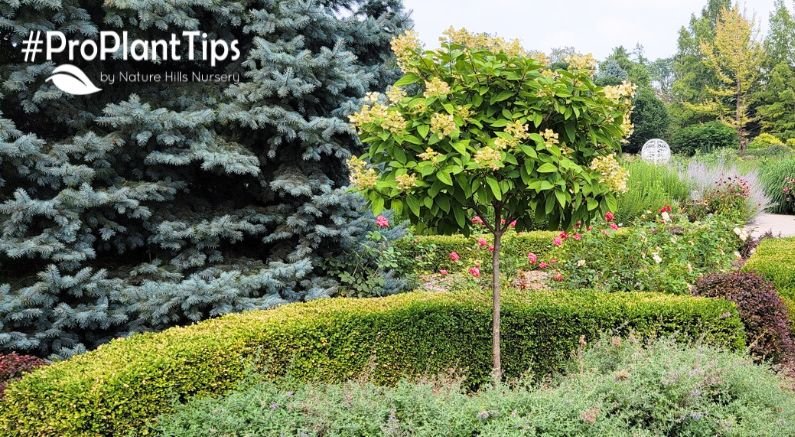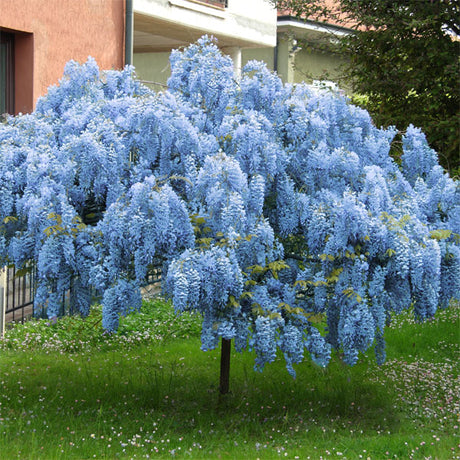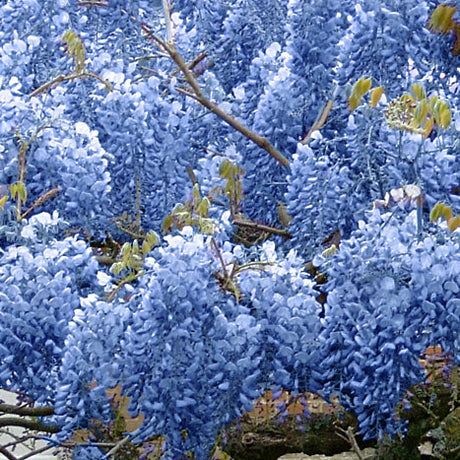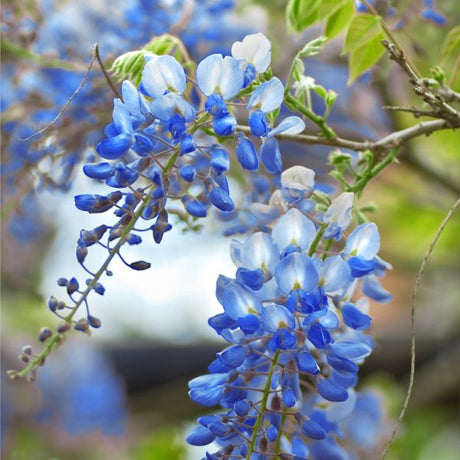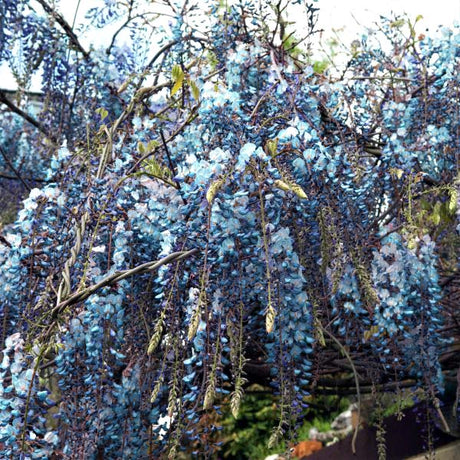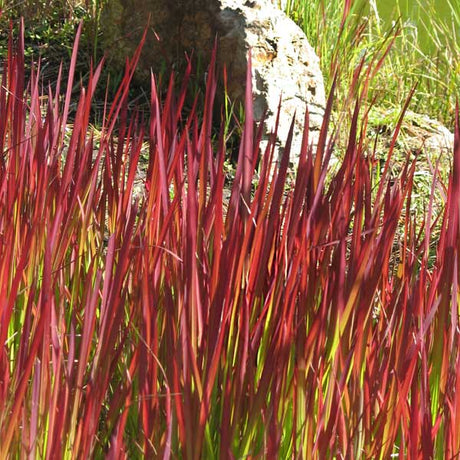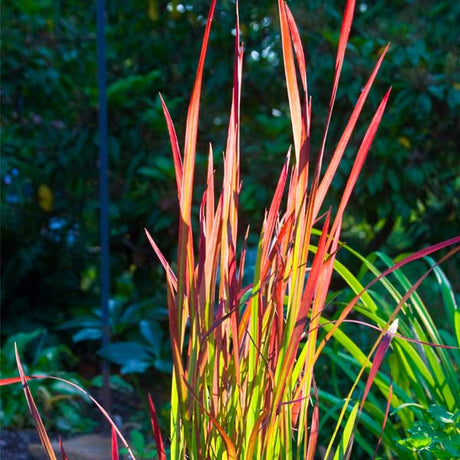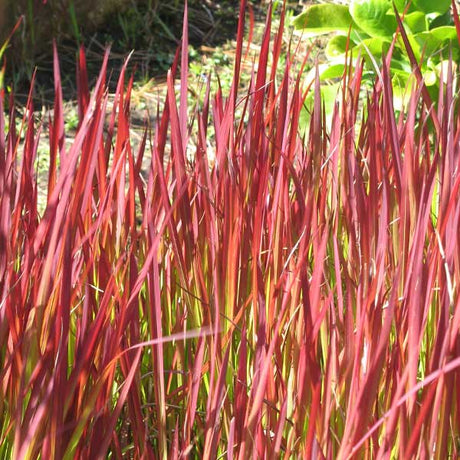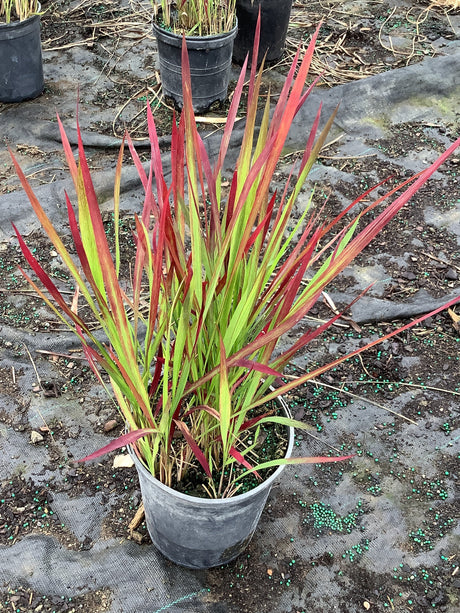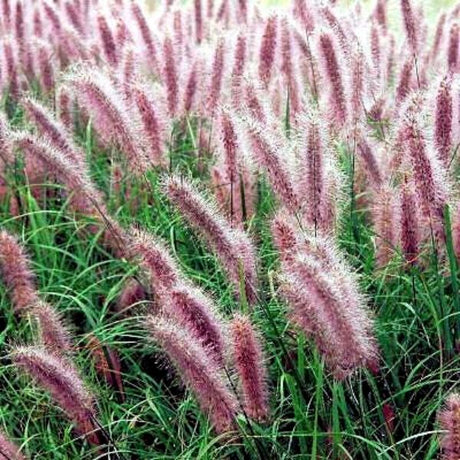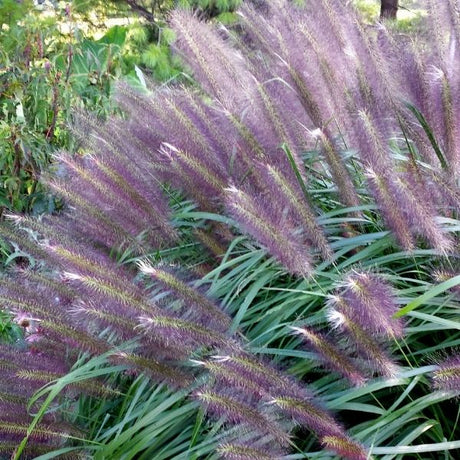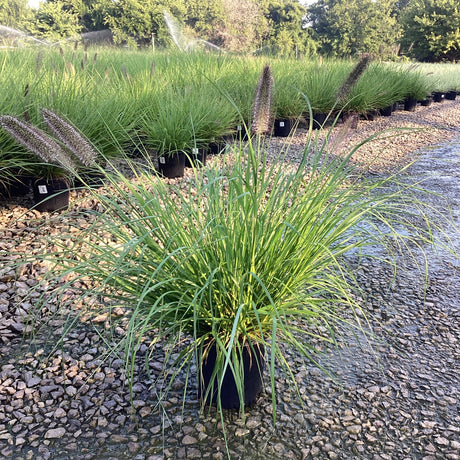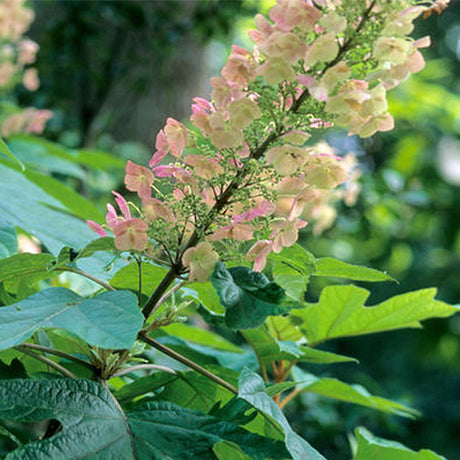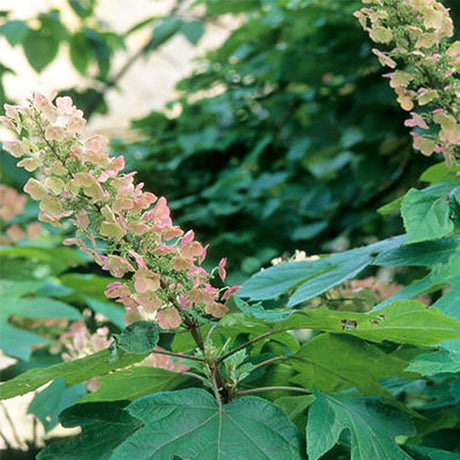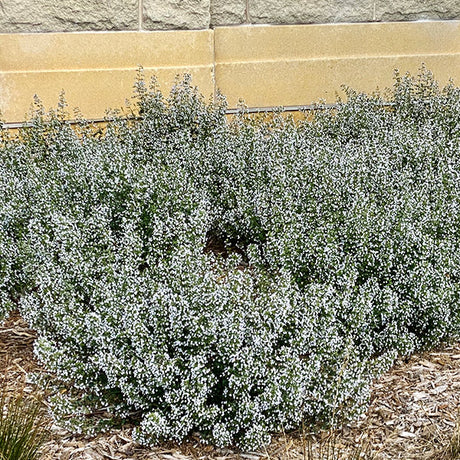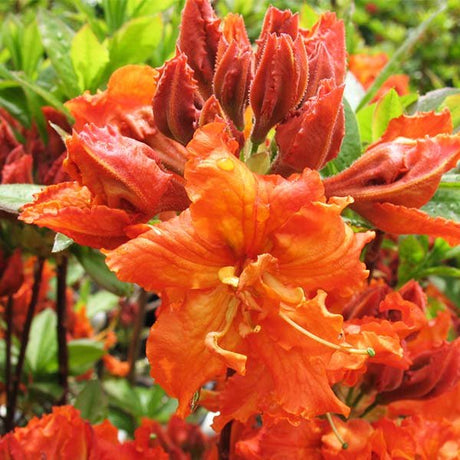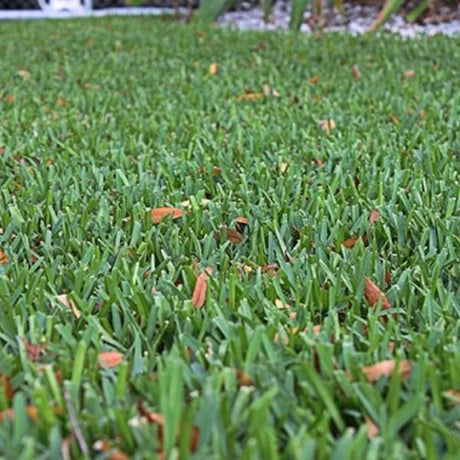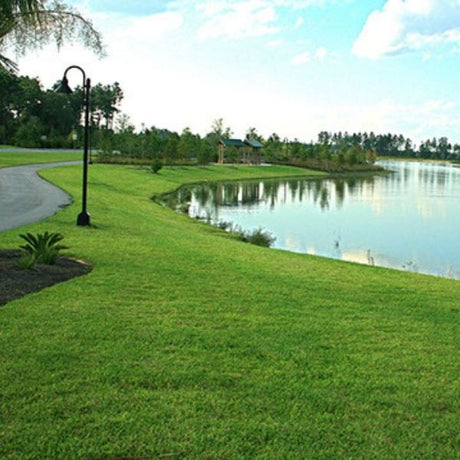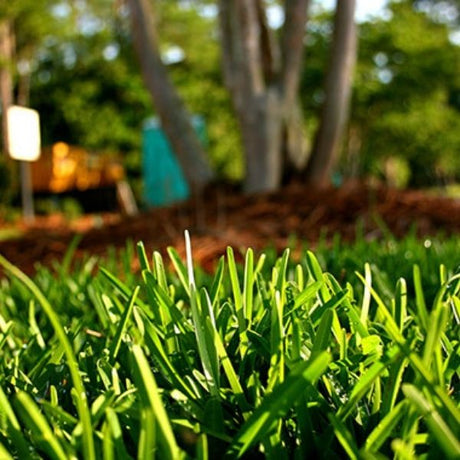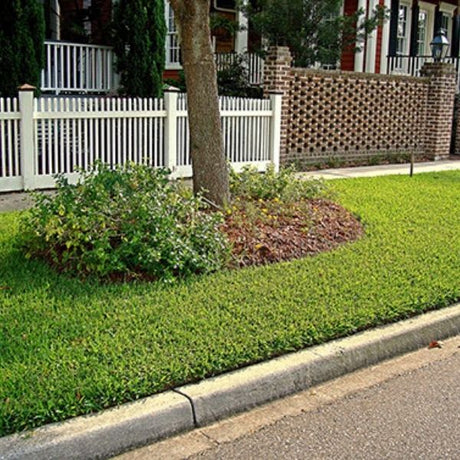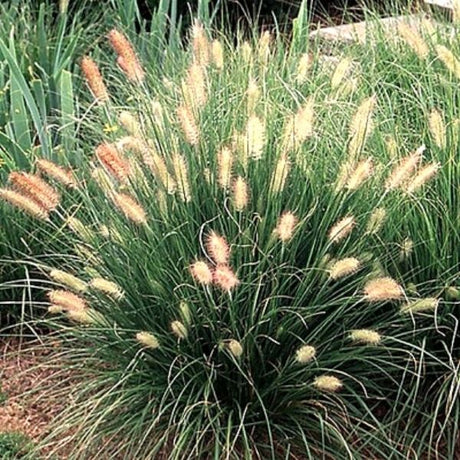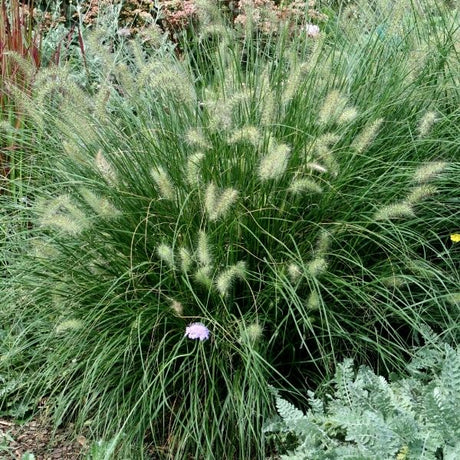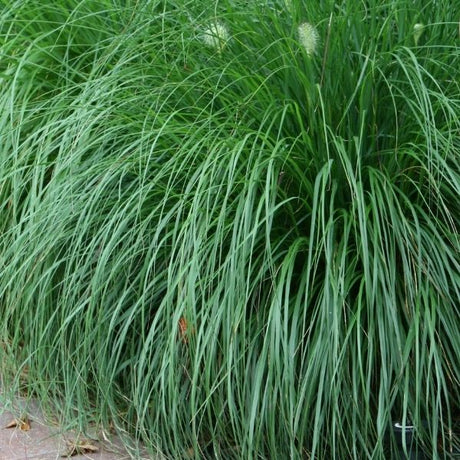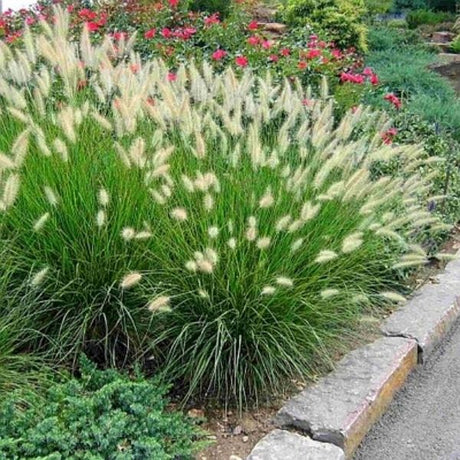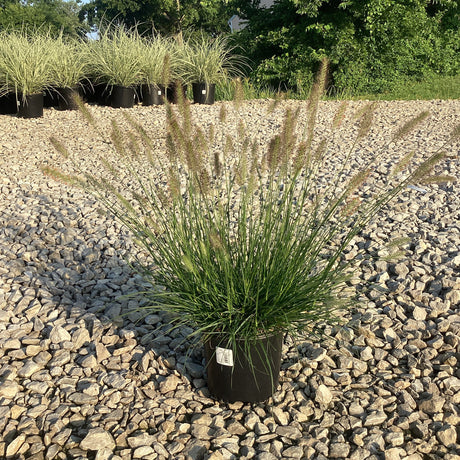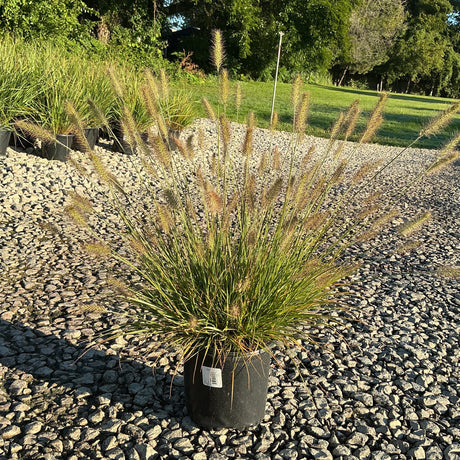Flowering Tree Forms: Unique Shrubs with a Twist
Flowering tree forms are some of the most affordable, eye-catching plants you can add to your yard. These living sculptures bring texture, color, and movement to any space, all while attracting butterflies, bees, and other pollinators.
Standard trees are perfect for patios, walkways, or front-yard focal points. Flowering tree-form shrubs deliver big visual impact in small spaces. They're a must-have for gardeners who love something a little different!
These specialty plants aren't just beautiful; they're versatile, long-lived, and completely unique! From Hydrangeas to Roses and Rose of Sharon, each one offers its own stunning twist on traditional blooms.
All About Grafted Tree Form Flowering Shrubs

So, what exactly is a tree-form plant? Unlike ordinary trees, flowering tree forms are created when a shrub is grafted or trained onto a single, straight trunk known as the "standard". This trunk acts as the sturdy foundation, while the flowering top, known as the "scion", provides the lush canopy of blooms above.
Grafted tree forms combine the best of both worlds: the strength and stability of a tree with the color, texture, and fragrance of your favorite flowering shrubs. It's gardening artistry at its finest, a bit of science and a lot of style!
The process begins with selecting a vigorous rootstock, which ensures hardiness and resilience. A healthy flowering branch is then carefully attached, or "grafted", to the top, where it fuses and grows as one plant. The result is a single-stemmed showpiece that looks like a mini tree, bursting with blooms high above the ground.
It's especially fun to see a Rose bush, Hydrangea, or Rose of Sharon floating in midair like Ma Nature herself designed it that way. These tree forms add instant personality and curb appeal to any garden, and they're fantastic space savers, too!
Choosing the right one might seem daunting: what color will pop best? When will it bloom? And where should you plant it? No worries! Nature Hills has simplified the search with easy filters, expert growing guides, and our favorite picks below!
- 12 Creative Design Ideas for Flowering Tree Forms
- Hydrangea Tree Forms
- Rose Tree Forms
- Rose of Sharon Tree Forms
- Care & Maintenance
- Seasonal Pruning - Step by Step
- Blooming With Personality
12 Creative Design Ideas For Flowering Tree Forms
Ready to be inspired? Check out 12 creative design ideas for using flowering tree forms, plus our top recommendations available now at NatureHills.com!
- Use several flowering tree forms to create intimate "garden moments" or vignettes throughout your yard; each becomes its own focal point.
- Plant near a pond, fountain, or birdbath to enjoy the mirrored reflection of colorful blooms on the water's surface.
- Line a walkway with evenly spaced tree forms for structure and rhythm. Design tip: Odd numbers always look more natural than even ones.
- Place one at the corner of your house and expand your foundation planting bed to include it for a soft, elegant transition between lawn and home.
- Frame an entryway or front steps with a matching pair as sentinels. Guests will instantly notice your designer-worthy front door display.
- Position a single specimen about 15 feet from your front door for a graceful accent that ties your entry together.
- Shade a child's play area or backyard picnic table. These small-scale trees are just the right size for creating whimsical, living shade in a shade garden or sensory garden. Perfect feature plantings for cottage gardens and mixed shrub borders.
- Prune several tree forms so their canopies grow together as a short, airy hedge that draws the eye upward. Read more about pruning to maintain a healthy structure without interrupting blooming.
- Plant one outside your bedroom window for a picture-perfect morning view of blooms and visiting pollinators.
- Curve a row of flowering tree forms behind patio furniture. Combine them with regular bushes for textural contrast in limited spaces, an ideal setup for a cozy outdoor room.
- Mix and match colors and species from Nature Hills' tree form collection to create a designer look that's uniquely yours.
- Use one as a charming screen beside a porch or deck. Pair with a cozy bench for the perfect photo backdrop through spring, summer, and fall.

Hydrangea Tree Forms
Hydrangea trees offer a big impact in compact form! These tree-trained Hydrangeas feature oversized, showy blooms atop a sturdy trunk. Their large flower clusters and lush green foliage create instant curb appeal and add dimension to any garden bed or patio, especially beautiful in a mixed shrub border.
Limelight Hydrangea Tree (Hydrangea paniculata 'Limelight') brings elegant lime-green blooms that age to creamy white, ideal for brightening shaded corners or patio pots.
Vanilla Strawberry Hydrangea Tree (Hydrangea paniculata 'Renhy') delivers large flower heads that shift from white to blush pink to strawberry red for months of garden color.
Little Lime® Hydrangea Tree (Hydrangea paniculata 'Jane') offers full-sized flowers in a smaller, more manageable size. Perfect for walkways or patio containers.

Rose Tree Forms
Rose tree forms take your favorite flowering bushes and give them an elegant twist. These living lollipops of color create height, fragrance, and classic romance at eye level. Space them about five feet apart and protect them in winter, especially in colder zones. Learn about pruning roses to keep them healthy and full of blooms.
Petite Knock Out® Rose Tree (Rosa 'Meibenbino') is a compact, disease-resistant beauty with endless scarlet blooms and glossy foliage.
Hot Cocoa™ Tree Rose (Rosa 'WEKpaltlez') glows with rich smoky-red flowers and a spicy fragrance that makes it a striking centerpiece.
Two-fer® Brilliant Pink Iceberg & Iceberg Rose Tree combines two classic colors, bright pink and pure white, on one stem for an unforgettable display.

Rose of Sharon Tree Forms
Rose of Sharon trees bring a tropical vibe to any backyard. These hardy Hibiscus syriacus varieties are trained or grafted onto a trunk for a compact, elegant shape. Plant them in the ground or enjoy smaller types in patio containers. Move containers to a sheltered garage for winter in colder climates, a great idea for your winter watering routine.
Azurri Blue Satin® Rose of Sharon Tree (Hibiscus syriacus 'DVPazurri') produces stunning blue blooms with purple centers that attract hummingbirds and butterflies from summer through fall.
Lavender Chiffon® Rose of Sharon Tree (Hibiscus syriacus 'Notwoodone') dazzles with long-lasting lavender double blooms and graceful form, ideal for patio gardens.
Blushing Bride Rose of Sharon Tree (Hibiscus syriacus 'Blushing Bride') glows with soft pink flowers that symbolize love and serenity. It's a true garden sweetheart.
Pink Chiffon® Rose of Sharon Tree (Hibiscus syriacus 'Pink Chiffon') flaunts ruffled pink blooms that shimmer in sunlight while drawing in butterflies and hummingbirds.
Care & Maintenance
Grafted flowering tree forms are easy-care once established, but a few smart habits keep that trunk sturdy and the scion happy. Use the tips below for Hydrangea, Rose, and Rose of Sharon tree forms.
Planting and watering:
- Set the root ball at grade and keep the graft union 3 to 4 inches above the soil line. Planting too deeply can stress the trunk or cause the scion to try to root.
- Water deeply the first growing season - about 1 inch per week from rain or irrigation. Use slow, deep soakings rather than frequent sips.
- Mulch 2 to 3 inches thick in a wide ring to keep roots cool and moist. Keep mulch pulled back 3 inches from the trunk.
Trunk, graft, and scion protection:
- Stake only if the trunk flexes in the wind. Use a soft, figure-8 tie and remove the stake after one season so the trunk strengthens naturally.
- Guard the trunk from string trimmers and mowers. A simple plastic trunk guard or a wider mulch ring prevents damage.
- Wrap the lower trunk in late fall in cold-winter climates to limit sunscald and frost cracks. Remove the wrap in early spring.
- Keep the graft union visible and dry. Do not bury it or pile mulch against it.
- Remove any shoots from the trunk or below the graft as soon as they appear. These are rootstock suckers that will steal energy from the scion.
- After storms, check ties, straighten the canopy gently, and prune torn wood cleanly back to a healthy lateral.
Fertilizing:
- Early spring: apply a slow-release, balanced fertilizer at the label rate. Water in well.
- Mid-summer: if growth is light, feed lightly again. Stop fertilizing 6 to 8 weeks before your average first frost so new growth can harden off.

Seasonal Pruning - Step by Step
Tools: clean bypass pruners, loppers for thicker wood, and a hand saw for large branches. Sanitize blades between plants.
Late winter to very early spring - primary structural prune (before bud break):
- Identify the graft union and the main trunk. Do not cut into the trunk or below the graft.
- Remove all suckers from the trunk and any shoots emerging below the graft. Pinch or cut flush.
- Take out dead, diseased, or crossing branches in the canopy first. Cut back to a healthy lateral bud, not stubs.
- Thin for airflow. Remove a few small interior twigs so light reaches the center of the canopy.
- Shape the "lollipop". Shorten overly long shoots by one-third to an outward-facing bud to keep a rounded, balanced crown.
- Finish with a light overall check. The canopy should be even on all sides, with no heavy clusters that could bend or split.
Bloom wood timing by plant:
- Hydrangea paniculata tree forms: bloom on new wood. Do most shaping in late winter to early spring.
- Hibiscus syriacus tree forms: bloom on new wood. Prune in late winter to early spring.
- Rosa tree forms: repeat-bloomers benefit from the late winter/early spring shape-up plus regular deadheading during the season.
In-season touch-ups:
- Spring to summer: deadhead spent Rose flowers to a strong outward bud. Lightly tip-prune straggly shoots to keep the canopy round.
- Mid-summer: remove water sprouts or wayward shoots that spoil the shape.
- Late summer: stop pruning hard so growth can harden off for winter.
Container care
- Use a sturdy pot with drainage. Choose a high-quality potting mix, not garden soil.
- Water when the top inch is dry. Containers dry faster in heat and wind.
- Feed with a slow-release fertilizer in spring, then supplement with a dilute liquid feed during peak bloom if needed.
- Overwinter in a sheltered garage or against a protected wall in cold zones. Water just enough to keep the root ball from fully drying.
Winter prep
- Refresh mulch and water well before the ground freezes to reduce winter root stress.
- Wrap the trunk and secure the canopy loosely with soft twine where heavy snow or ice is common.
- In deer or rabbit country, use a seasonal fence or tall trunk guard to prevent bark chewing.
Blooming With Personality
Follow this simple rhythm: plant at the right height, protect the trunk and graft, water deeply, feed modestly, and prune at the right time, and your Hydrangea, Rose, and Rose of Sharon tree forms will stay healthy, rounded, and full of flowers for years. Ma Nature and your pollinators will thank you.
Tree-forms of beloved flowering shrubs are an easy-care way to add elegance, height, and visual interest, even in small urban gardens. Their sculptural beauty and pollinator appeal make them some of the most sought-after plants available today.
But hurry! They sell out quickly each season!
Happy Planting!

